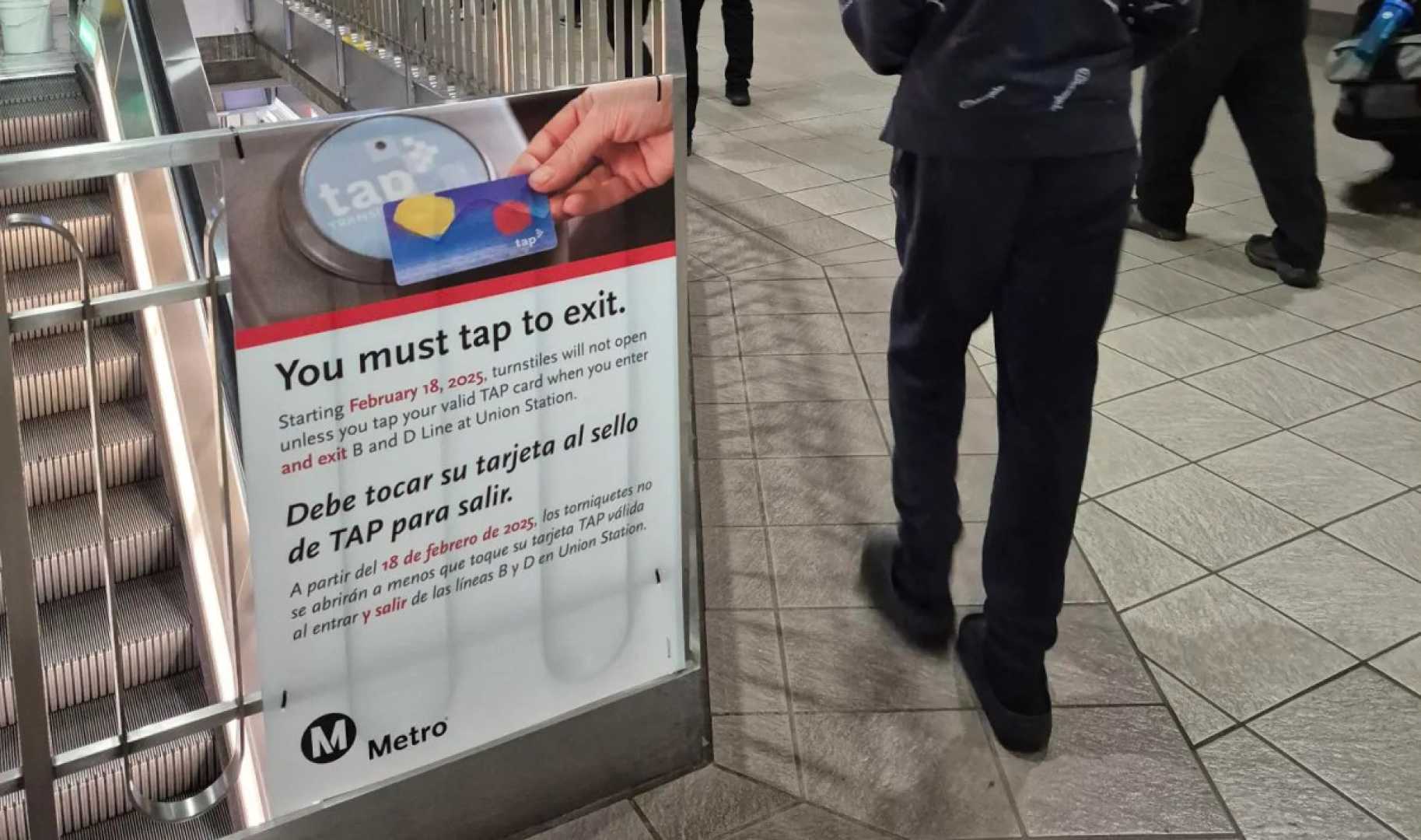News
L.A. Metro Expands TAP-to-Exit Program Amid Safety Concerns

LOS ANGELES, Calif. — Starting this week, riders of the L.A. Metro will be required to tap their TAP cards to exit train stations, as the agency expands its TAP-to-Exit program. The initiative, aimed at enhancing safety and reducing fare evasion, was implemented at Union Station for the B and D Lines.
This expansion marks the third station in the Metro system where riders must tap their cards upon exit, following the earlier implementations on the E-Line in downtown Santa Monica and the B Line in North Hollywood. The TAP-to-Exit program was first introduced in May 2024 and aims to roll out to all end-of-line stations by the end of the year.
A one-week grace period is being provided for Union Station riders to adapt to the new requirements, with full enforcement set to begin next Tuesday. Riders who do not comply may face citations. According to Metro, the program has already yielded significant financial benefits, recovering over $130,000 in unpaid fares since its launch, primarily in North Hollywood and Santa Monica.
Don Snyder, an occasional commuter, expressed support for the program, stating, “I think that any way to earn money to be self-sufficient or to make improvements is great.”
Besides the financial implications, Metro officials believe the TAP-to-Exit initiative can lead to a safer transit environment. Reported incidents of fights, drug use, and vandalism on the Metro’s Transit Watch App have decreased by over 40% across all 14 B-Line stations since the program was introduced. For the E-Line, reports of such incidents dropped by 55%.
Chrissy Washington, a student who commutes through Union Station daily, noted that the change has made the station feel less crowded and overwhelming. “I would definitely say that it’s made a bit of a difference,” Washington said. However, she expressed skepticism about its effectiveness at smaller stations.
Another daily rider, Nathan Arteaga, also remarked on the improvements in cleanliness and traffic flow at Union Station. “I noticed that less traffic again, and just like, a little bit cleaner and stuff. So I like it,” Arteaga said. He expressed optimism regarding the future of the program.
Some riders speculated that the changes were part of Metro’s preparations for the 2028 Olympics. However, Andres Di Zitti, director of the Station Experience Department for LA Metro, clarified that the program’s focus extends beyond the Olympics. “The long term is thinking beyond the 2028 Olympics, and it’s what’s going to stay beyond that as a legacy project or as an improvement for our daily customers and commuters,” Di Zitti said.
Di Zitti emphasized that the TAP-to-Exit program is intended to create fair compliance among riders and contribute to a safer transit system overall, aligning with Metro’s larger goals to provide reliable public transit.
For students concerned about the financial impact of the new rules, the University of Southern California (USC) offers free unlimited rides for its students. Additionally, low-income riders can qualify for a limited number of free rides through Metro’s assistance programs.












